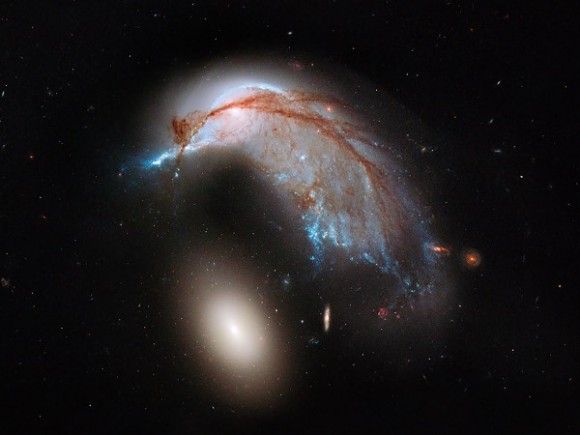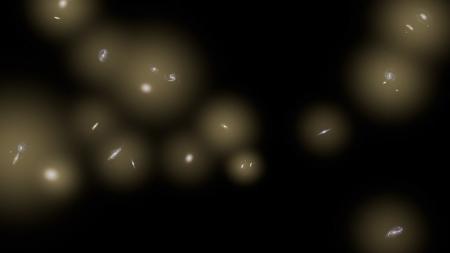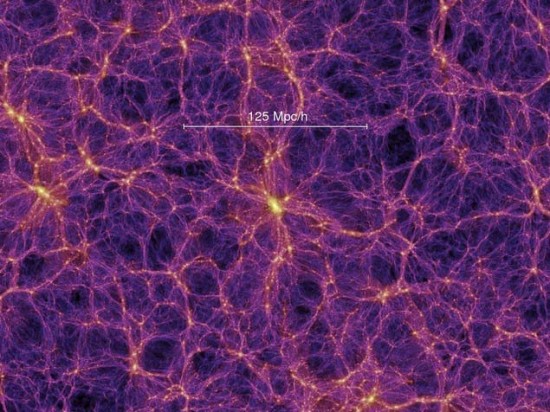
NASA announced late this week (November 7, 2014) that an experiment sent to space via sounding rockets in 2010 and 2012 detected a surprising surplus of infrared light in the dark space between galaxies, a diffuse cosmic glow as bright as all known galaxies combined. The glow is thought to be from orphaned or rogue stars flung out of galaxies during galaxy collisions. Indeed, these astronomers suggest, half the stars in the universe might reside in what we have long considered extragalactic space. The findings could redefine what scientists think of as galaxies. Galaxies might not have such discreet boundaries as we imagined. Instead, they might stretch out to great distances, forming a vast, interconnected sea of stars.
Results from the Cosmic Infrared Background Experiment, or CIBER – published in the journal Science this week – are helping settle a debate on whether this background infrared light in the universe, previously detected by NASA’s Spitzer Space Telescope, comes from these streams of stripped stars too distant to be seen individually, or – another suggested possibility – from the first galaxies to form in the universe.
Michael Zemcov is lead author of a new paper describing the results from the rocket project and an astronomer at the California Institute of Technology (Caltech) and NASA’s Jet Propulsion Laboratory (JPL) in Pasadena, California. He and his team set out to study what astronomers call the extragalactic background light, or EBL. The EBL is essentially all the accumulated light from stars over the history of the universe and ranges in wavelength from the ultraviolet, through the optical, and to the infrared. Zemcov said in a press release:
We think stars are being scattered out into space during galaxy collisions. While we have previously observed cases where stars are flung from galaxies in a tidal stream, our new measurement implies this process is widespread.


Using suborbital sounding rockets, which are smaller than those that carry satellites to space and are ideal for short experiments, CIBER captured wide-field pictures of the cosmic infrared background at two infrared wavelengths shorter than those seen by Spitzer. Because our atmosphere itself glows brightly at these particular wavelengths of light, the measurements can only be done from space.
During the CIBER flights, the cameras launch into space, then snap pictures for about seven minutes before transmitting the data back to Earth. Scientists masked out bright stars and galaxies from the pictures and carefully ruled out any light coming from more local sources, such as our own Milky Way galaxy. What’s left is a map showing fluctuations in the remaining infrared background light, with splotches that are much bigger than individual galaxies. The brightness of these fluctuations allows scientists to measure the total amount of background light.
To the surprise of the CIBER team, the maps revealed a dramatic excess of light beyond what comes from the galaxies. The data showed that this infrared background light has a blue spectrum, which means it increases in brightness at shorter wavelengths. This is evidence the light comes from a previously undetected population of stars between galaxies. Light from the first galaxies would give a spectrum of colors that is redder than what was seen.
James Bock is principal investigator of the CIBER project from Caltech and JPL. Bock said:
The light looks too bright and too blue to be coming from the first generation of galaxies. The simplest explanation, which best explains the measurements, is that many stars have been ripped from their galactic birthplace, and that the stripped stars emit on average about as much light as the galaxies themselves.
Future experiments can test whether stray stars are indeed the source of the infrared cosmic glow. If the stars were tossed out from their parent galaxies, they should still be located in the same vicinity. The CIBER team is working on better measurements using more infrared colors to learn how stripping of stars happened over cosmic history.
Results from two of four CIBER flights, both of which launched from White Sands Missile Range in New Mexico in 2010 and 2012, appeared on November 7 in the journal Science.
By the way, there’s been a trend in recent years toward seeing galaxies as interconnected on very large scales. In September, 2014, for example, astronomers announced that superclusters of galaxies appear interconnected. That includes our own local supercluster – the great cluster of galaxies containing our Milky Way – which astronomers have named Laniakea, meaning immense heaven in Hawaiian. Astronomers have known for decades that galaxies are found in groups, like our own Local Group containing dozens of galaxies, and in massive clusters containing hundreds of galaxies, all interconnected in a web of filaments in which galaxies are strung like pearls. Where these filaments intersect, we find huge structures, called superclusters. The superclusters appear to be interconnected, but the boundaries between them are poorly defined and not well understood. Read more about Laniakea and the possible interconnectedness of galactic superclusters.

Bottom line: Findings from a NASA sounding rocket experiment could redefine what scientists think of as galaxies. The rocket detected a surprising surplus of infrared light in the dark space between galaxies, a diffuse cosmic glow as bright as all known galaxies combined. The glow is thought to be from orphaned or rogue stars flung out of galaxies. Thus galaxies might not have such discreet boundaries as we imagined. Instead, they might stretch out to great distances, forming a vast, interconnected sea of stars.











